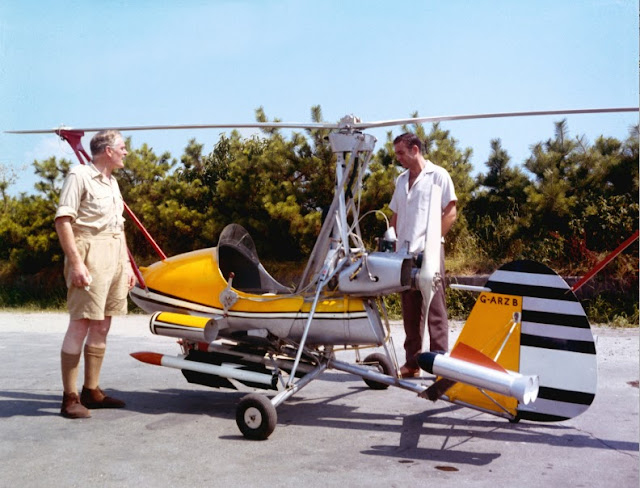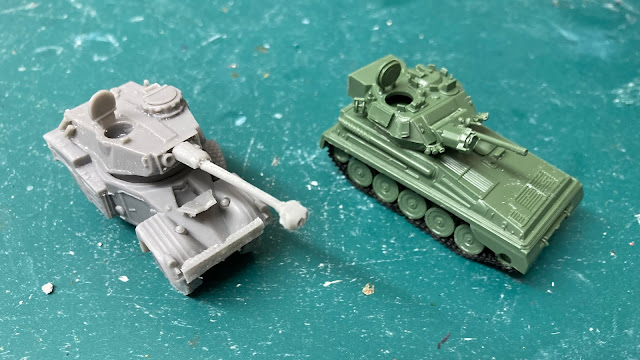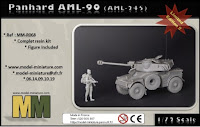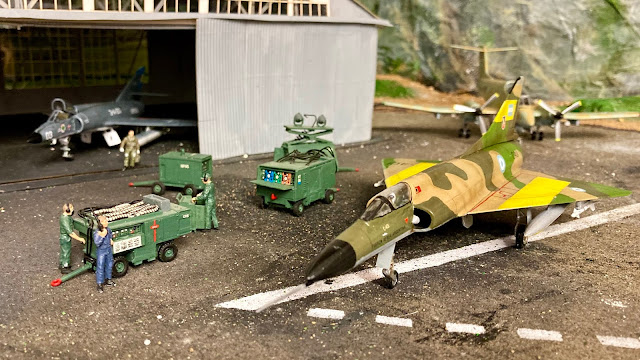This week’s Falklands War build is the Airfix 1:76 scale model of the FMA IA 58 Pucará (or the Fortress).
The Pucará was the Argentine’s ground-attack and counter-insurgency (COIN) aircraft manufactured by the Fábrica Militar de Aviones. It entered service in May 1975 with the Argentine Air Force (Fuerza Aérea Argentina, FAA) and had its operational debut late in 1975 when a number of Pucará carried out counter-insurgency strikes as part of Operativo Independencia, the first large-scale military operation of the Dirty War against the People's Revolutionary Army (ERP), a guerrilla group which tried to create a Vietnam-style war in the northwestern province.
With its twin-turboprops, the Pucará was designed to operate from short, rough airstrips, making ione of the few Argentine aircraft capable of flying from the small airfields in the Falklands, the runway at Port Stanley Airport being too short for the navy's Super Étendard and FAA Skyhawks and Mirages to be deployed, especially after being bombed by Vulcan 607!
During April 1982, 12 Pucará were shipped to the Falklands for use in a reconnaissance and light-attack role, operating from Port Stanley airport and the two small grass improvised airfields at Goose Green and Pebble Island.
 |
| FMA IA 58 Pucará A-522 |
The Pucará's fixed armament was comparable with aircraft of the WWII era, and directly comparable with the cannon and machine gun arrangement on the Messerschmitt Bf 110. It consisted of two Hispano 804 20 mm cannons mounted under the cockpit with 270 rounds each and four 7.62 mm Browning FN machine guns mounted on the sides of the fuselage with 900 rounds each.
Although these aircraft had little success against British ground forces, it was a real threat to the British helicopters. In Harry Benson's excellent book Scram!, about life as a helicopter pilot during Falklands War, one gets a first hand account of what it was like to have to 'scram!' at the first sign of a Pucará attack aircraft. This threat was to be realised when, on 28th May, a Pucará shot down and killed the pilot of the Scout helicopter, Lieutenant Richard James Nunn, en route to recover the wounded Commanding Officer 2 PARA, Lieutenant-Colonel Herbert 'H' Jones VC, during the battle for Goose Green. This was to be the only British air to air combat loss to the Argentines during the conflict.
My scale model is of Pucará A-522 which was delivered to the Argentinean Air Force Grupo 3 de Ataque (3GA) at Port Stanley airfield on or around 15th May 1982, as a replacement for aircraft lost earlier in the conflict. On the surrender of the Argentine forces, A-522 was found at Port Stanley airport in a relatively undamaged state. It was airlifted by Chinook onto the Contender Bezant in Port William and brought to the Fleet Air Arm Museum, Yeovilton, Somerset. It can now be seen on display at the North East Land, Sea & Air Museums (NELSAM), Sunderland, Tyne & Wear.
Update: I've not managed to get to Tyne & Wear to see A-522, however, in April 2023 I did get across to the Norfolk and Suffolk Aviation Museum where they have Pucará A-528 on display and looking rather good in its unusual camouflage some 40 years later!
 |
| Pucará A-528 on display at the Norfolk & Suffolk Aviation Museum April 2023 |
Pucará A-528, also with 3GA, was flown to Stanley Airport in the first week of April 1982, then to Goose Green on 29 April and then for some reason back to Stanley a week or so later, where it was found on the Argentine surrender in June. Although, post 14 June, it was found to be still standing on its undercarriage it had broken propeller blades, nose damage and shrapnel cuts below the cockpit area.
It was airlifted on 6 September 1982 by Chinook to the ship Contender Bezant and arrived back in Southampton on 23 September. From here it was to be displayed at several exhibitions including the Boat Show and the Cosford RAF Museum before being transferred to the Army Museum at Middle Wallop in 1985. When it arrived at the Norfolk & Suffolk Aviation Museum I do not know, but it is certainly there in 2023. Interestingly there is now visible damage to the port engine as it sags forward. The volunteer on duty suggested the aircraft had been dropped either in its loading or unloading from the Contender Bezant back in 1982, though I can fond no further reference to this.
 |
| Unnumbered sprue & unintelligible plans made for an interesting build! |
With unnumbered sprue, unintelligible plans, poor moulding and misprinted decals, this kit it was so far from what one expects from Airfix that it's hard to believe they would put their name to it. Looking further into its history, I believe Airfix may have acquired it from Special Hobby Models, as their 2003 kit and instructions look identical, albeit it Special Hobby Models' decals look better!
The colour scheme of the Pucará is noticeably different to the camouflage we are more familiar seeing on European aircraft, and I had to dig through the sea greys, earth browns and dark greens, to the bottom of my paint box, to find something which would come close to the pale green and yellow sand used on the original aircraft. I also attempted, for the first time, to use Blu Tack (the white kind as it contains, apparently, less oil) to mask out the required camouflage pattern. I first applied the sky blue to the underside, masked this with tape and then covered the upper surface with the pale green. In my excitement, I forgot to add the pre shading of darker primer, so will have to make a note to self not to get so carried away next time!
 |
| My first attempt at using Blu Tack masking |
Once the green had been given a chance to dry, I moulded the Blu Tack over the areas which were to remain green and then sprayed over the gaps with the sand colour. After another drying period, and feeling like a plastic surgeon about to remove the bandages from his patient, it was time to remove the Blu Tack. I was quite happy with the final result, although disappointed to have lost the shading through my omission to even apply it before the green!
 |
| Blu Tack removed |
Ignoring past experience and my better judgement, I did attempt a bit of weathering using some Humbrol weathering oils with mixed results and found, in my spares box, a set of Argentine FAA decals to replace the awful Airfix versions. The varnish layers were applied using Johnsons Floor Shine which has, amazingly, become my goto source of gloss varnish.
 |
| Weathering and after market decals added |
My final comment on the kit, is that one of the key building instructions was to place an 8g weight in the nose to ensure it sat correctly on its front wheel when completed. This is not an unusual requirement but having weighed out the ballast it became very clear that there was absolutely no space to place any weights in the nose! I had to, therefore, reluctantly ignore this instruction, knowing full well that this would mean I’d never be able to easily display it. Indeed, to take the picture of the aircraft outside the hanger, above, I had to superglue its front wheel to the runway!
------
The ModelBrand: Airfix
Title: F.M.A. IA 58A Pucara
Number: A03068
Scale: 1:72
Released: 2008 | Rebox (Updated/New parts)

























































